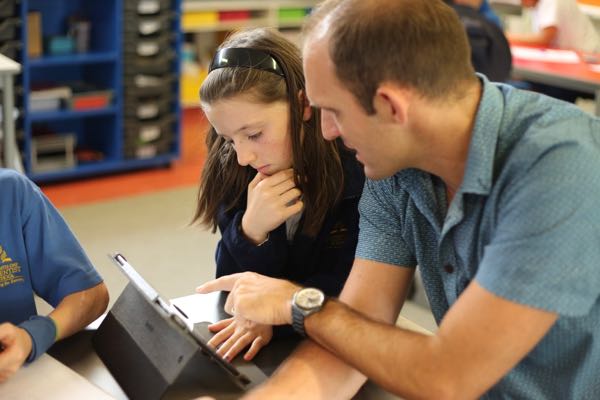The coronavirus prompts this principal to ask, “What really matters?”
If you had asked me a year ago if we would be holding school at home and relying on technology to interact with our students, my answer would have been a resounding no. But in a short time our lives have had to continue while being put on hold and in lockdown during the coronavirus (COVID-19) pandemic. Here in New Zealand, we have had a heavy emphasis on sticking to our “bubble.” This means staying at home only with those living in our household unless venturing out locally for exercise, groceries or medical treatment. And school as we knew it became an impossibility.
In mid-March, just one week before the lockdown began, I received a call from the Ministry of Education asking about our capabilities for offering distance learning. New Zealand had only five confirmed COVID-19 cases at the time. Even though our numbers were comparatively low, with worldwide cases having just surpassed 100,000, Italy’s were exploding. New Zealanders realised it was only a matter of time before an outbreak could reach us.
In discussion with our staff members, it was clear we had the infrastructure and the expertise to offer distance learning. Some of our teachers had already been using Google Classroom and the “flipped classroom” learning method (video instruction followed by learning activity) so were excited about the challenge and saw it as an opportunity to test 21st century pedagogy.
For our emergent, or beginner, year groups, we set up the learning differently. The last thing we wanted was our five- to seven-year olds relying on a screen for everything, so we created learning packs. These included a table of must dos and can dos, with activities such as writing a lockdown diary, making their own weather station and recording log, and writing a list of questions to use on a recorded FaceTime interview with their grandparents. We supported these activities through use of programs such as Matific for maths and videoconference platform Zoom for teachers to check in with parents. We also encouraged our parents to take learning cues from their child. If the child felt distressed, families could put learning aside and focus on wellbeing. The most important thing: ensuring learning at home didn’t make a negative impact on the environment at home.
The big challenge we’ve been working to overcome is equitable access to learning. For some, distance learning has worked. It’s given students flexibility around structuring their program, allowing them to develop strong self-management and take initiative. For others, distance learning hasn’t worked. Access to their program—some families don’t have the internet at home or a device for their children to work with, others have a single device shared between siblings—low levels of accountability from home and other distractions such as gaming have been a barrier.
Our staff members have been thinking about this for the past few years. Students who’ve developed strong competencies for learning will continue to engage in learning with or without a formal learning environment. So, we need to teach students how to learn rather than what to learn. Self-management, critical thinking, developing social emotional competencies, participating and contributing are key. But these don’t develop in a vacuum.
This highlights what I’ve missed most through distance learning and what we can’t foster easily through technology: relationships.
While many families, including mine, have noticed an increase in family time and reduced stress because of a decrease in the number of commitments and busyness of schedules, relationships outside of this unit—notably with our students—are on hold. The distance learning model within a classroom environment, then, could be a great leap forward, developing strong competencies for learning and independence while maintaining strong relationships that help children grow into well-rounded adults.
Research shows us we learn best when feeling safe and happy. Our feelings allow us to engage our frontal cortex rather than going into fight or flight mode. This notion will be at the forefront of our thinking and planning, ensuring to the best of our ability that our students are feeling positive and confident about their learning so their education flourishes.
Share

